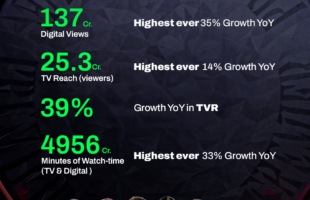
Pexels/Ketut Subiyanto
Since the beginning of 2020, both video production and video consumption have changed drastically. The forced move to remote production, coupled with consumers remaining at home for over a year, has led to significant changes in how audiences are acquired and retained.
Media organizations across the Asia Pacific region are still figuring out how to combine the best of both worlds when it comes to on-premises and remote production. Most are opting for the hybrid approach, combining the flexibility and agility of cloud-based working to enhance a traditional workflow.
Some broadcasters, however, are long-time adopters of cloud-based production workflows. Long before the logistical challenges posed by the COVID pandemic, major broadcaster Mediacorp started building out a valuable multi-platform video strategy, creating content in formats at speed and driving consumers to its own linear broadcast and OTT channels.
Mediacorp: Delivering over and above
Mediacorp uses Grabyo’s cloud-based production platform to connect with millions of people to drive viewership and add value to its OTT and broadcast services, generating millions of views and active engagement with audiences.
Mediacorp’s digital teams create additional live streams and highlights for its news, sports and entertainment content completely in the cloud, simultaneously supplementing and promoting its services.
The broadcaster effectively scaled its digital content output without engaging with any of the broadcast and studio team or equipment, winning new viewers and giving its current audiences more immersive experiences – and more content to watch.
For example, during the 2020 Singapore Election, Mediacorp used Grabyo’s live production platform to broadcast political debates and live news coverage to its social media channels using a small crew with minimal equipment – which can be as little as a camera, encoder and laptop.
By engaging Singaporean audiences with interactive live content, Mediacorp has created memorable touchpoints and positions its online and broadcast services as primary destinations for a range of content.
While its team works from anywhere in the world, and are able to adapt to new challenges quickly, there is no disruption to the service that its audience receives.

Why remote?
Remote production reduces the cost and resources needed to engage audiences and drive uptake. Producing live streams for OTT services, or distributing videos across multiple platforms, requires only a skeleton crew with minimal equipment, working on laptops, and situated anywhere in the world. There is no need to fly people around the world, or for anyone to be in the same location. Alongside the financial benefits, this also reduces the carbon footprint of production.
There is also no longer the trade-off between quality and flexibility when it comes to cloud-based working. Many OTT services and broadcasters are using cloud services to deliver high-definition, low latency video to audiences across every screen.
Shifting production to the cloud also brings a number of benefits when it comes to scale and localization.
Scaling and localizing content
Heading further afield to Australia, and Sports Flick Global, the worldwide OTT and pay-per-view streaming platform for live sports is remotely creating localized experiences for its paying subscribers, without adding any new infrastructure or equipment.
Sports Flick uses Grabyo to remotely distribute live sports broadcasts to its OTT platform. It then recruits local commentary talent to call games for specific audiences, tailoring international live broadcasts for regional audiences.
Its commentators only need a laptop with a built-in microphone to contribute from wherever they are in the world. Its producers then overlay the audio to the broadcast in the cloud, delivering directly to the Sports Flick platform.
Currently, the platform is using this workflow for its Australian rights to the UEFA Women’s Champions League. Sports Flick also plans to roll out local commentary for its other properties soon.
Neither the commentators nor the production team are fixed to any given location and can replicate this workflow, using the same live feed, to other territories and channels infinitely.
Why now?
Those with existing cloud infrastructures and workflows were the ones who adapted easily, and in some cases, thrived under social distancing regulations. Adopting remote and cloud working has been proven to be more resilient, flexible and scalable.
While media organizations in Asia have been slower to innovate than those in Europe and the Americas, the pandemic has shown the way forwards. The future of production doesn’t lie in a studio, it’s everywhere and anywhere.
About the author:

Elliot is a digital media and technology specialist, with over 18 years of experience across traditional and emerging media platforms within all Asia-Pacific markets including China, Japan, India, and Southeast Asia. In his role, Elliot advises major broadcasters, rights holders, and content publishers across the Asia pacific to maximise their digital video strategies. Elliot also helps publishers to easily monetise video content across social media, mobile, and OTT platforms.








